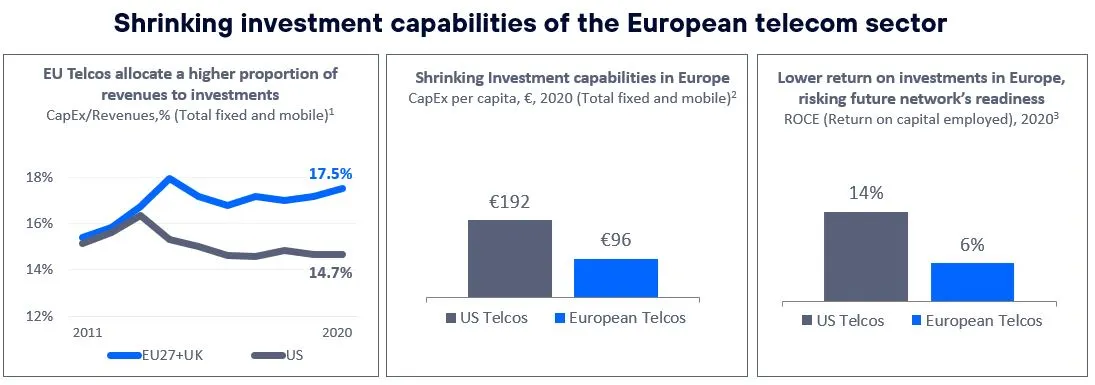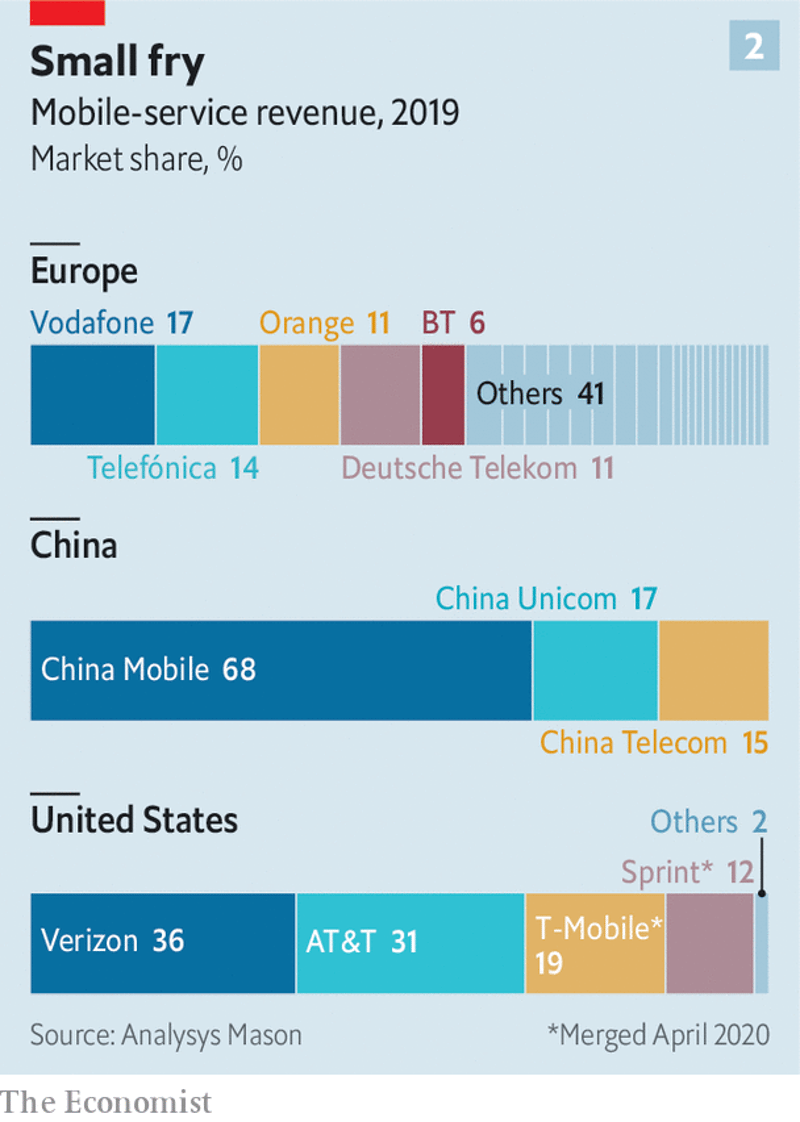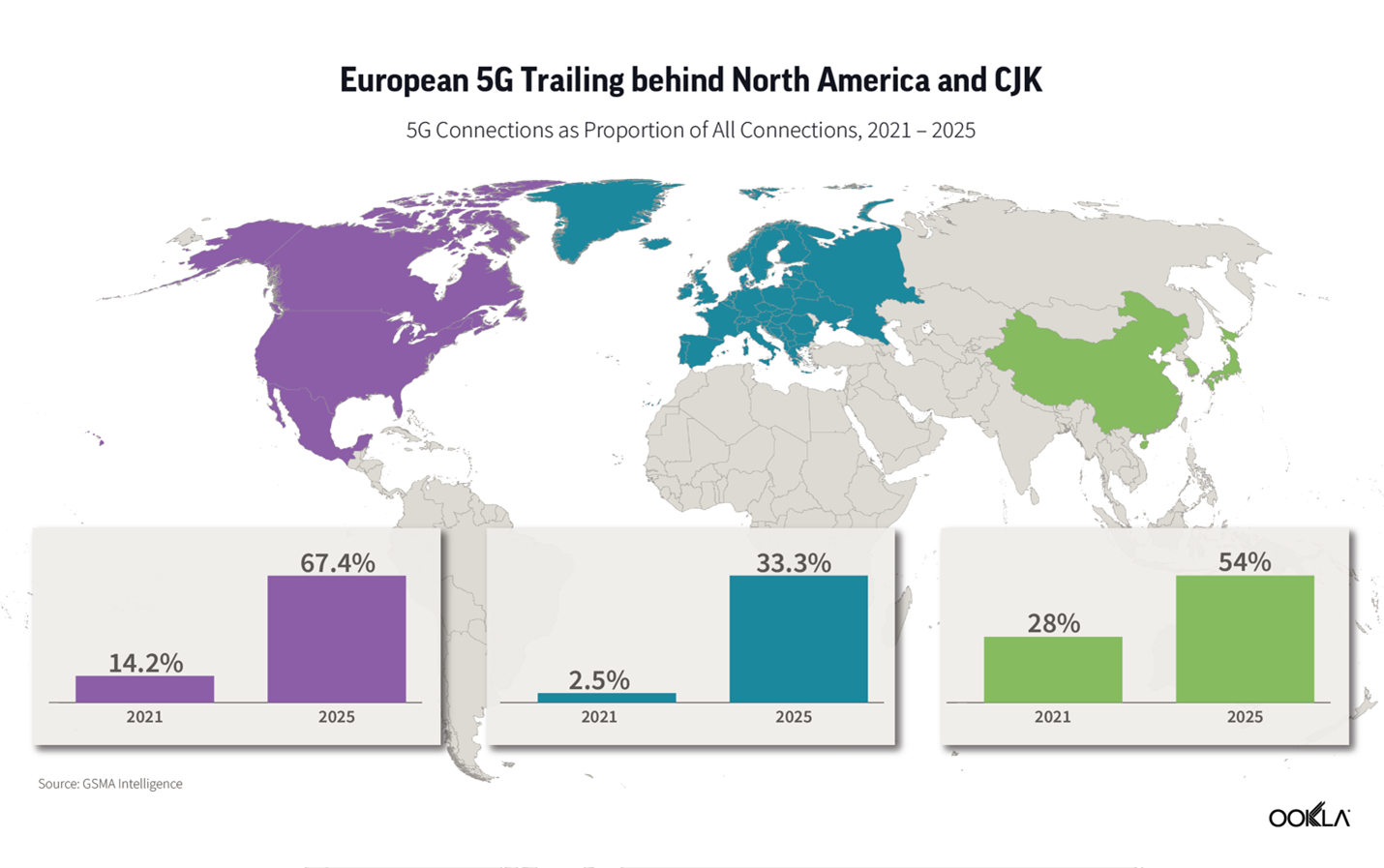There have been several interesting articles and reports in recent weeks which have gone relatively unnoticed. But they give very important insights into the state of Europe’s telecoms market. Ericsson CEO, Borje Ekholm, speaking at a seminar hosted by the Nordic Investment Bank, warned Europe may not develop any leading industries if policymakers keep prioritising regulation over innovation. Arguing that the fragmented telecoms market is holding the continent back from unlocking new digital services and the economies around it.
Speaking at a seminar hosted by the Nordic Investment Bank, Ekholm expressed concerns about how European CSPs are “disadvantaged in competitive scale” against competitors in the US, China and India. He noted that the majority of providers in the former continent are not making enough returns “to cover their cost of capital”.

Source: Telefonica
Ekholm believes a welcoming attitude towards embracing digitalisation helped China and the US tap into 4G capabilities. In turn creating new companies that have now made it to the world’s top 500 organisations by revenue, a category under which European representation “has diminished”. To his point, he noted the European Union (EU) has attracted just 4% of funding for AI to date, compared to 80% for the other two countries. Continuing down this path could see Europe “relegated to a museum with great art but no leading industries, lacking in digital technology, innovation and industrial leadership on the global stage”, he warned.
Ekholm also added the average number of subscribers per operator in Europe is 4.4 million compared to 95 million in the US, 300 million in India and 400 million in China, as he pressed for an in-market consolidation.

“Building out ubiquitous, high performance, digital infrastructure is the key to Europe’s future competitiveness, technology leadership and decarbonisation ambitions. European policymakers have an essential role in making this possible.”
Mobile association GSMA recently issued a manifesto outlining similar concerns. The GSMA argued critical reform of European laws is necessary to position the region as a technology frontrunner by 2030, a rank it argued had been lost due to various barriers to digitalisation.
RECOMMENDED READING
In a manifesto released on 20 March, the GSMA asserted that barriers to the growth and competitiveness of the telecoms sector in the EU have hindered the progress of the digital economy.
 Source: The Economist
Source: The Economist
It highlighted a need to address “systemic challenges” around market fragmentation, regulation, and investment. And called on EU politicians to “embrace a new digital infrastructure framework” which promotes financial input and market harmony. Laszlo Toth, head of Europe and CIS at the industry association, said “urgent action to secure the continent’s digital future has never been more imperative”, as the region faces “significant geopolitical, economic and societal shifts”.
“This manifesto represents a commitment to partnership and progress, laying the groundwork for Europe to reclaim its position as a global leader in digital technology and innovation”. The GSMA argued an overhaul is required to deliver universal 5G coverage in Europe by 2030. Highlighting the achievements of mobile sector initiatives covering factories, farming and city management in terms of fuelling “economic growth” and sustainability.
It recommended EU politicians take action around spectrum costs and availability. Levelling the regulatory playing field and “updating historically based rules to reflect current realities”.
 Source: GSMA
Source: GSMA
The digital landscape in Europe is marked by fragmentation, with CSPs operating at a scale that significantly limits their competitive edge on the global stage. Ekholm’s observation of the average number of subscribers per operator in Europe compared to their counterparts in Asia and the US underlines the scale disadvantage and its impact on the ability to generate adequate returns. This situation underscores the importance of building a robust, high-performance digital infrastructure as the cornerstone of Europe’s competitiveness, technological leadership, and sustainability ambitions.
Europe does seem to be nearing a digital crossroads. The path forward demands a holistic approach that intertwines technological advancements with regulatory reforms. Supporting structural changes in the mobile market through more conducive policies for network consolidation will be key to overcoming current challenges. In doing so, Europe can not only enhance its digital infrastructure but also solidify its standing as a global leader in technology and innovation. Prepared for a future of sustained digital growth and competitiveness.



